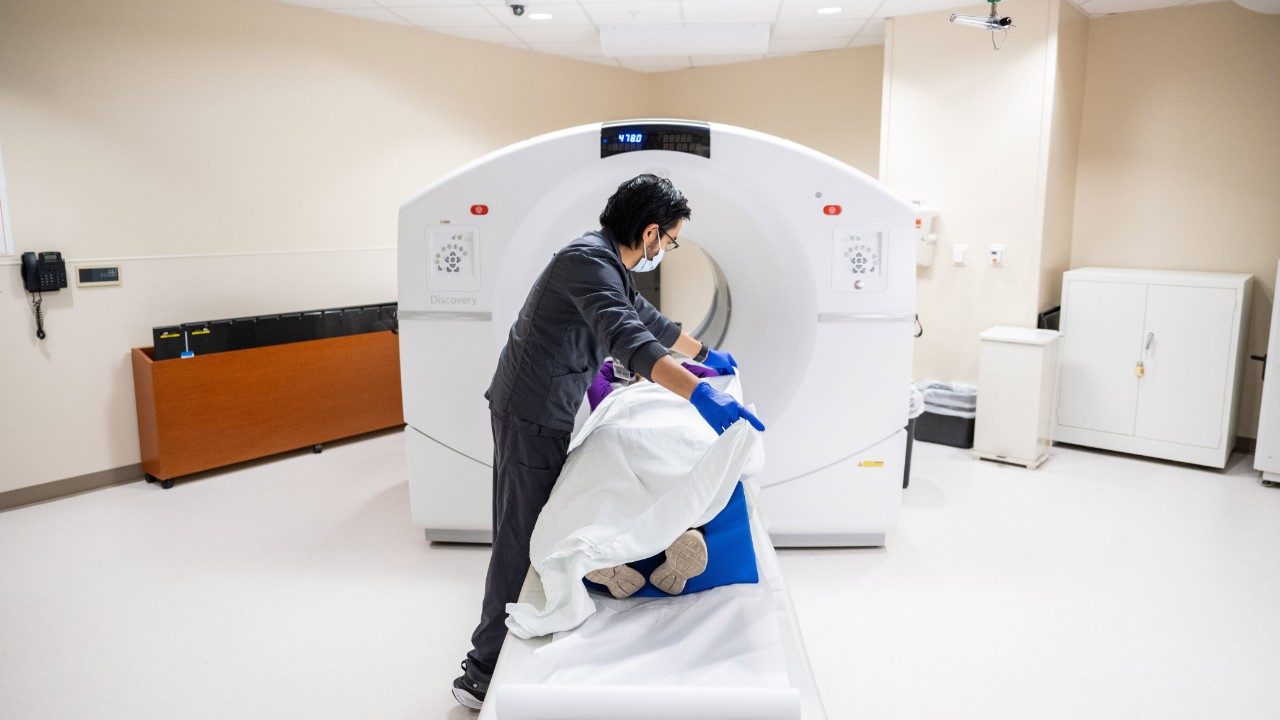PET scans: What are they and what to expect
A positron emission tomography (PET) scan is an imaging exam that shows how your tissues and organs are working. PET scans can cause anxiety for some people. But knowing what to expect and following the recommended prep can make a big difference.
Here, I’ll answer common questions about PET scans, including how they work, how to prepare for one and their role in cancer treatment.
What is a PET scan?A PET scan is an imaging...

CT scans and cancer risk: What patients need to know
A computerized tomography scan, also called a CT scan, provides detailed images of your body to help doctors diagnose and treat various health...
Standardized uptake value (SUV) numbers on PET scans: What do they mean?
An FDG PET scan uses a radiotracer to measure things like blood flow, oxygen use and sugar metabolism in your body. It shows how your tissues...
Looking forward to a bright future in health care
More than 5,000 students and trainees pass through MD Anderson each year. But when our Diagnostic Imaging teams went to offer full-time roles to seniors graduating from The University of Texas MD Anderson Cancer Center School of Health Professions (SHP), they often found that our students had accepted roles elsewhere in the Texas Medical Center or around the state.
“With a shortage of quality academic programs in many of...

CT scan vs. MRI: What’s the difference?
You may already know that MRIs and CT scans are two of the imaging methods doctors use to diagnose and stage cancer.
But do you...
Familial adenomatous polyposis monitoring, Whipple procedure gave my husband more time
When he was 15, my husband Jesse underwent a colectomy, a procedure that removed his colon. Jesse opted to do this after learning that he...
How a brain tumor taught me to embrace myself
My whole life changed in June 2017. I had just finished my sophomore year at Texas Tech University. My life seemed pretty simple. I went to...
Metastatic melanoma survivor: 'Coming back to MD Anderson is a great feeling'
In May 2016, Victor Barreiro learned his melanoma, originally treated in his hometown of Mexico City in 2014, had returned and spread throughout...
Brain tumor treatment reveals hidden artistic talent
My husband, Coleman Schoessow, draws vibrant, abstract, stream-of-consciousness art with ink on canvas. He discovered this hidden talent during...
Finding purpose in my breast cancer diagnosis
Rebecca Stedman believes that every experience had in life serves a purpose, and cancer is no exception.
“Just as I felt like I was...








